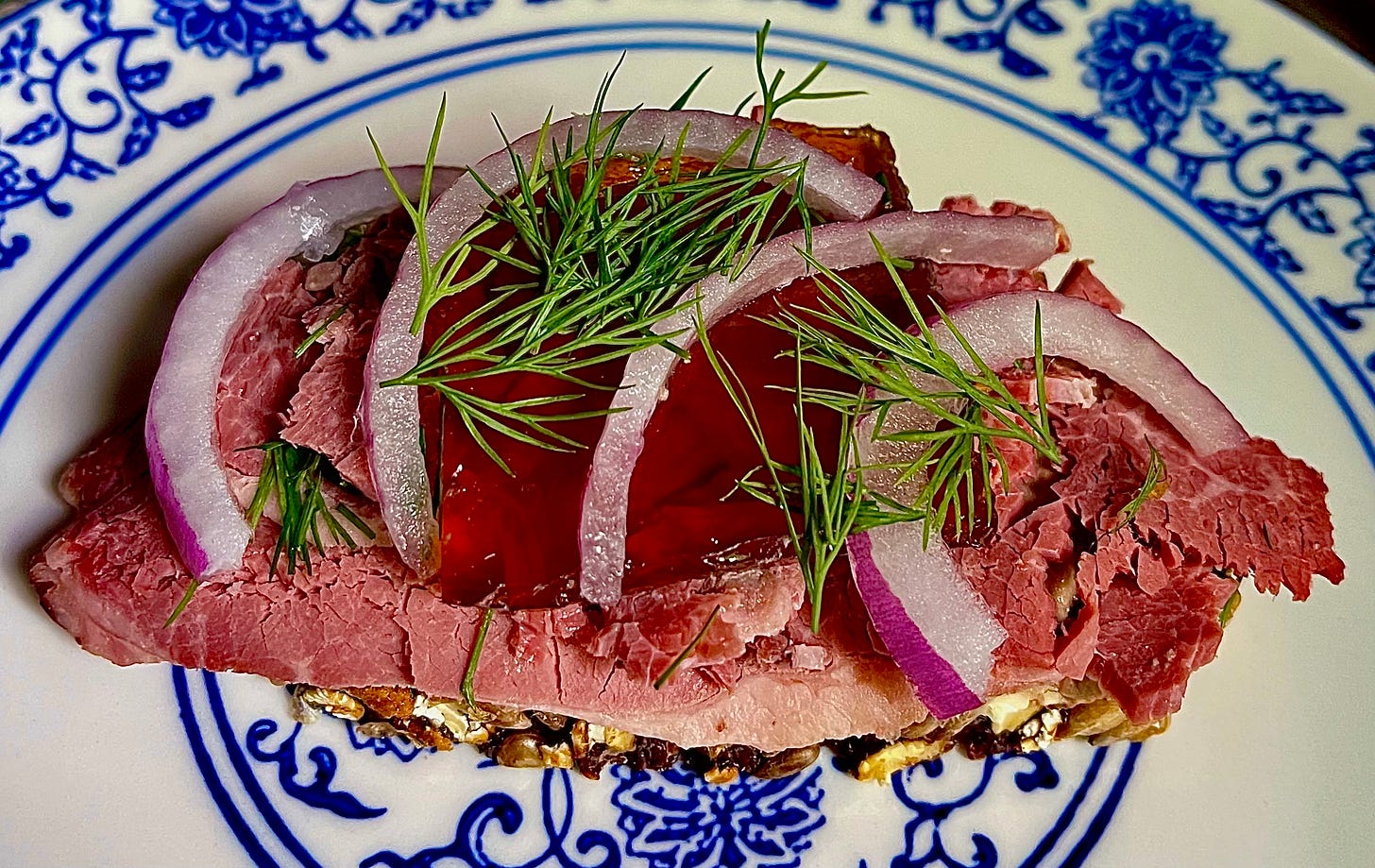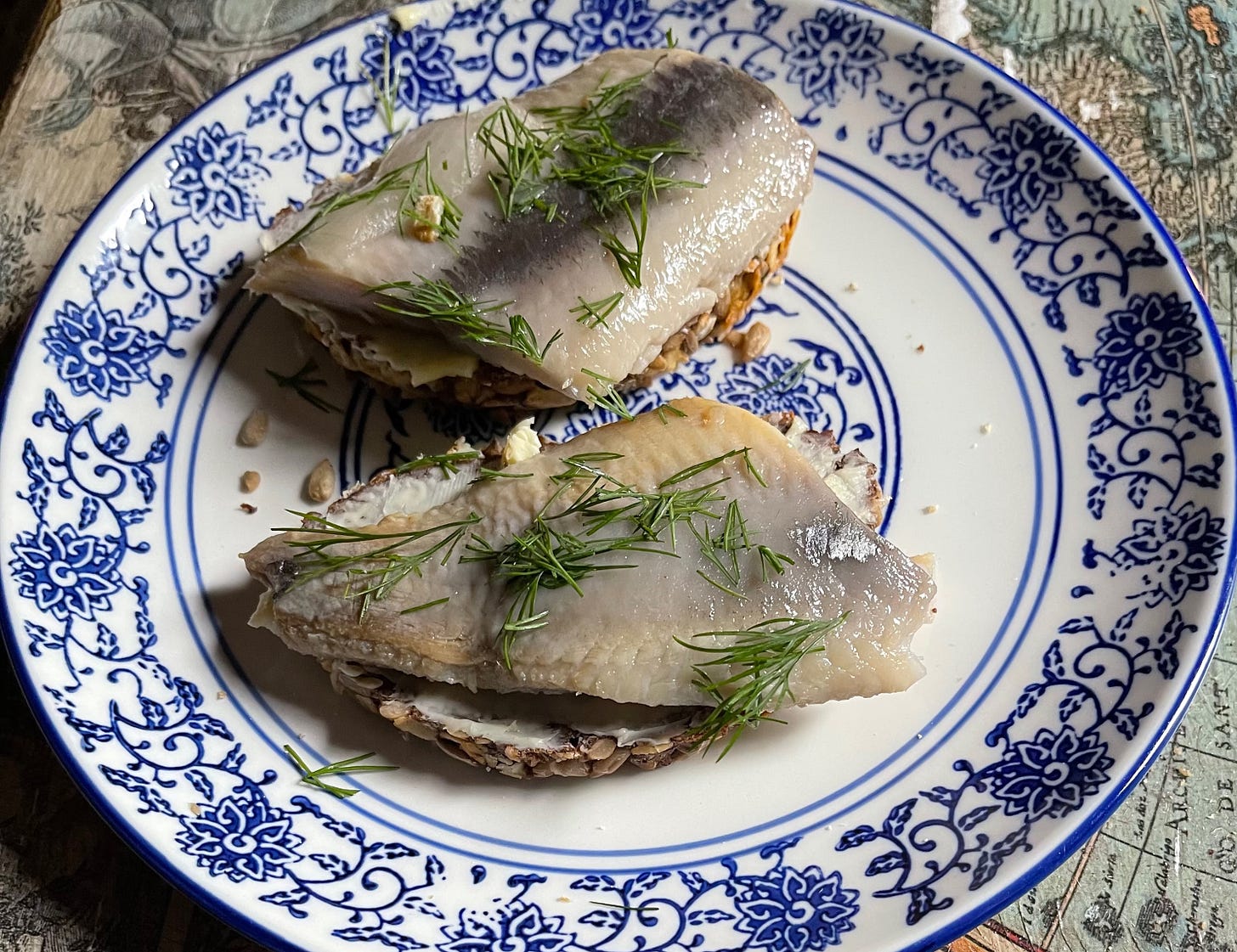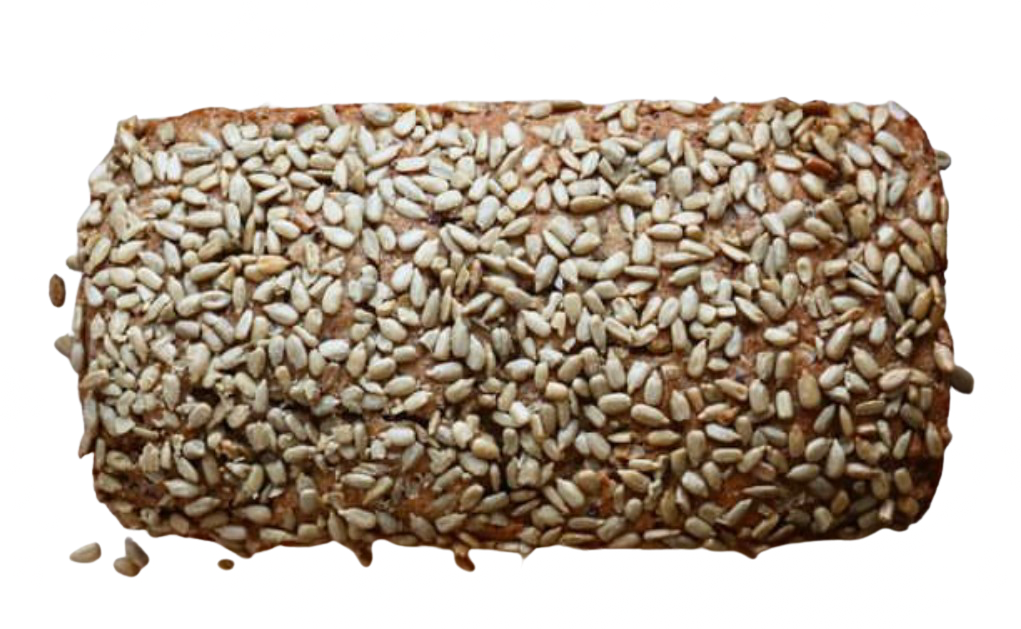Notable Sandwich #61: Dyrlægens Natmad
Something is delicious in the State of Denmark
Welcome to Notable Sandwiches, the feature where Talia and I trip merrily through the ever-evolving document that is Wikipedia’s List of Notable Sandwiches in alphabetical order. This week, an open-faced Danish “snack”: dyrlægens natmad.
THURSDAY, MAY 4
It’s been a shitty week—insert your reasons here; the world is full of ambient miseries and I’m sure you have your own—and today I found myself confronting a sandwich I couldn’t even pronounce. Absent any loftier ideas for how to proceed, I decided to make the damn thing, on the principle that very few things are harder to say than to do.
A dyrlægens natmad, or “Veterinarian’s Midnight Snack,” is a type of smørrebrød, whih is arguably Denmark’s most beloved dish. Mentioned in Danish-language texts as early as the 18th century, smørrebrød is an open faced sandwich on liberally-buttered, multi-grain-and-seed-studded rugbrød, and piled with a dizzying variety of ingredients. The translation is “butter bread,” but that’s like calling a club sandwich “mayo bread.” The rugbrød is just the canvas for an unending gallery of culinary possibilities. (For its German and Russian analogues, check out our article on butterbrot—similar staples that only start off simple.)
The smørrebrød, culinary historians have posited, descends from the Medieval trencher, a heavy slab of stale bread that served as both plate and sponge for stray juices. At the end of a meal it could be eaten or given as alms. In later centuries, roadside taverns in Denmark discovered that one of the best ways to sell a lot of beer is to provide salty fare to go with it: ubiquitous rye bread, adorned with the preserved products of very long winters—pickled herring, salted meat, aged cheese and other thirst-inducing comestibles. (Stateside, pre-Prohibition pubs offered sardines on toast for much the same reasons, and salted peanuts remain a bar snack pretty much everywhere.)
The smørrebrød never received—or needed—a second slice of bread; its open face remains an invitation for the hungry. Nowadays, when Nordic cuisine has garnered a tidy little galaxy of Michelin stars along the lines of “elegant simplicity,” the smørrebrød’s canvas-like quality makes it an ideal platform for haute touches, like these stunners from Michelin-guide-recommended Palægade in Copenhagen:
“The first big contribution Denmark made to cooking has to be smørrebrød,” said René Redzepi, Odin of the new Nordic pantheon. “It’s not just a sandwich; it’s a whole cuisine.”
On the other end of the culinary spectrum, smørrebrød remains a working man’s lunch … or a midnight snack. The dyrlægens natmad was one of 170 varieties of smørrebrød on the menu at Oskar Davidsen’s namesake Copenhagen restaurant, and was named after Dr. Sigurd Kejlgaard, a regular who would stop at the restaurant after a long day’s work at the nearby royal stables. Frankly, it’s a bit strange that the moniker is so specific—one doesn’t really want to contemplate late-night veterinary procedures while also contemplating a sandwich. At any rate, Kejlgaard’s standing order contained leverpostej (liver pate), sliced salt beef, aspic, and raw red onion. It wasn’t long before the restaurant put his sandwich on the menu, where Oskar’s great-granddaughter Ida keeps it to this day.
Needless to say, I had none of these ingredients on hand—except for butter; the recipe called for Danish butter, so I added Lurpak to my shopping list. For the leverpostej and salt beef I figured I could substitute liverwurst and corned beef, which are essentially the same thing. The rugbrød had me somewhat baffled—everything I read insisted on the fact that it was the most important component, and I wasn’t sure a standard rye would suffice.
The Sword and the Sandwich is a newsletter about serious extremism and equally serious sandwiches. Please consider supporting this work with a paid subscription:
Thankfully, I learned that there’s a Danish bakery in Tribeca, a short subway ride away (or a long walk in better weather) from my apartment. Founded in Copenhagen in 1991, Ole & Steen opened a New York branch in 2019, specializing in breads and pastries—specifically the type of pastry named after the people of Denmark. I didn’t want a danish, though; I wanted rugbrød, and this place had it. What I ended up with was brick-dense rye the size and shape of a small Italian loaf, but weighing ten times as much.
Then it was back to Brooklyn and Shelsky’s delicatessen, where I ordered a half pound of corned beef, a quarter pound of liverwurst, and in a snap decision, a half pound of pickled herring. Smørrebrød med sild (“with pickled herring”) is quite possibly the most popular sandwich in all of Denmark. I couldn’t resist. Then it was off to the grocery store, where I picked up the Danish butter, a red onion, some dill, and beef broth and gelatin for the aspic.
All in all I was pretty happy with my haul; the only thing I’d have to make myself was the aspic, which seemed simple enough to prepare (it was.) Other than slicing the bread and onion, all that remained was assembling the ingredients. But first I made myself two herring smørrebrød with dill, and had myself a delicious lunch.
Though I am not a veterinarian, I still determined that the dyrlægens natmad should wait until midnight.
FRIDAY, MAY 5: 12:01
I began assembling my sandwich at about quarter to midnight, just after the Golden State Warriors finished eviscerating the Los Angeles Lakers. The aspic turned out great—or as great as I could have expected (is aspic ever great?). It was translucent, firm, suitably jiggly, and surprisingly easy to make: just beef broth, gelatin, and time.
Once my smørrebrød was fully assembled (see image at top) I dug in. It is exceedingly difficult to judge my success in this endeavor, seeing as I don’t actually know what it’s supposed to taste like. I know the components of course—a good Jewish delicatessen could make you a reasonable facsimile using a rye bagel, schmaltz, liverwurst, and corned beef. What I didn’t know was how those flavors would work together. I was pleasantly surprised. The salt of the corned beef was balanced by the silky richness of the butter and liverwurst, while the onion provided crunch and bite (I’m not sure what the aspic added, other than a silly texture.) But to my palate, the sandwich lacked acid; other than the onion, there was nothing to cut through the fattiness.
Would this be my own midnight snack of choice? Well, no. At that hour I’m usually ready for bed, so even if I was hungry, this would be far too complicated an option (and to be honest, I preferred the herring smørrebrød.) But I loved the smørrebrød med sild, and everyone was right about the bread; a slice or two with a thick coating of good butter makes for a simple, delicious snack, any time of the day.
It’s been a shitty week for lots of reasons—something is truly rotten in the state of our union—but writing about a sandwich whose name I can’t pronounce? That’s a privilege.











This was so much fun to read. Visiting Denmark in 1976, smorrebrott were a revelation, and a delicious and beautiful meal. And affordable on the "$10 per day" we allotted ourselves. I've visited Copenhagen twice. This article makes me want to go back right now. I'm glad you know how to make these lovely sandwiches.
Another sample of how great New York is. You can find a top notch Danish bakery that’s walking distance or a short subway ride from your home within moments of discovering you need one. No cars or long drives or mail order required. Both sandwiches, the herring and the corned beef and liverwurst sound delicious.